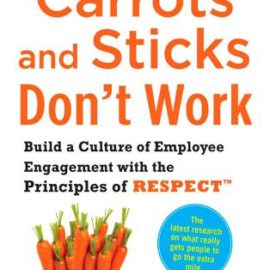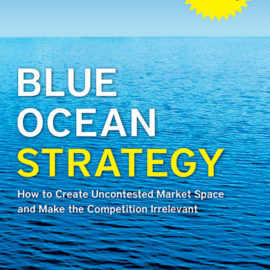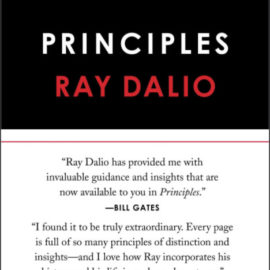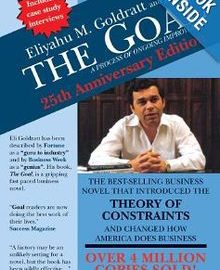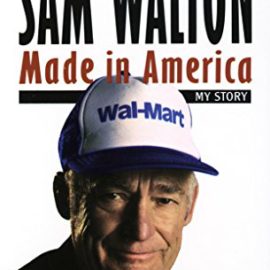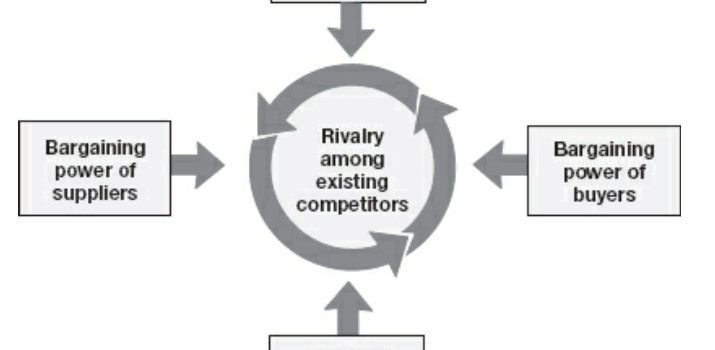

Michael Porter’s Five Forces Model explains the always important question: Why are some industries consistently more profitable than others?
When examining industries, it’s tempting to focus on the competition between rivals. But rivals are also engaged in a struggle for profits with all the other players in the ecosystem – like customers, who would always like to pay less and get more.
The five forces that matter in any industry are:
- Buyers
- Suppliers
- Substitutes
- Incumbents
- New entrants
The more powerful the force, the more pressure it will put on decreasing prices or increasing costs or both.
We’ll examine each one in turn, considering scenarios in your advantage as an incumbent. Scenarios in your disadvantage are usually the inverse of advantageous scenarios, so only notable alternatives will be listed.
Note that every adjacent industry has its own five forces, so that their relative disadvantage can be your gain (e.g. a fragmented supplier group is bad for suppliers but good for you).

Buyers
What this is:
- Customers who pay for your product
- Channels that influence the purchase decisions of end-users
- Retailers like Home Depot, Amazon
- Advisers like doctors, investment managers
What it does:
- Lowers prices, since powerful buyers will demand lower prices or else
- Increases costs, since powerful buyers demand more value or else
Scenarios in your advantage:
- Your size relative to buyers (buyers are fragmented)
- Truck maker Paccar appeals directly to individual owner-operators through comfort and customization, rather than brands like Peterbilt that appeal to large corporate buyers (more consolidated).
- High switching costs to your competitors
- Risk aversion dissuades trying new things
- Habits get people accustomed to your product
- Low switching costs to you
- Information asymmetry – inability to price compare, measure quality
Scenarios in your disadvantage:
- Price sensitivity by buyers. More likely when products are:
- Undifferentiated
- Expensive relative to their other costs
- Inconsequential to their own performance
- Buyers are consolidated relative to you and competitors
Suppliers
What this is:
- Providers of any direct input into your product
- Distribution channels, marketing
- Labor
What it does:
- Increases costs, since powerful suppliers can demand higher prices or else
Scenarios in your advantage:
- Your size relative to a supplier (higher % of supplier’s sales coming from you)
- [Groupon aggregated buyers to exert pricing power over small restaurants. (Eventually restaurants realized this was unprofitable and dropped out.)]
- [Suppliers can try to form cartels, though the temptation to defect is strong and they often disband. See Basic Economics]
- [The Internet brought marginal distribution cost to zero, allowing aggregators like Google and Facebook to amass consumer attention to exert control over information suppliers like media companies, eventually commoditizing them.]
- Low switching costs for you to change to alternate suppliers
- You can credibly threaten to vertically integrate into the supplier’s industry
- Coca-Cola can threaten to produce its own cans
- [Google produces its own phones to lower bargaining power of manufacturers who use Android]
Scenarios in your disadvantage:
- Labor unions
- Airline unions restricted who could wave planes back from gate, increasing cost.
- Industry needs suppliers more than suppliers need industry (ie when they have many alternative buyers in other industries)
- High switching costs for you to change suppliers
- PC industry has been beholden to Microsoft
Substitutes
What this is:
- Any product not directly in your industry that basically can do the same job as you
- Examples:
- For coffee as caffeine vehicle, substitutes are energy drinks, tea
- For food delivery, substitutes are eating in restaurants, microwaved food, groceries
- For human tax preparers, substitutes are TurboTax and doing it independently
- OPEC has fended off substitutes by managing the price of oil
What it does:
- Lowers prices to avoid buyers going to substitutes
- Increases costs, since incumbents compete with substitutes to provide superior value
Scenarios in your advantage:
- Better price-performance tradeoff
- Note this does not mean lower price wins. It’s a higher value for the same price, or same value for low price, etc.
- Solving a segment’s problems better than alternatives
- [Buyers hire human accountants to outsource complexity and time. Making TurboTax insufficient.]
- High switching cost
Notes:
- Substitution has a cascading effect from upstream that may be hard to predict.
- Say you’re a manufacturer of steel car bodies. The shift to electric cars may mean heavier batteries, so car manufacturers look to carbon fiber as a substitute for steel.
Rivalry Between Incumbents
What this is:
Like this summary? Want to learn more from books than ever? You'll love my product Shortform.
Shortform has the world’s best guides to 1000+ nonfiction books and articles. Even better, it helps you remember what you read, so you can make your life better. What's special about Shortform:
- The world's highest quality book guides - we discuss the book's main ideas, with expert analysis and commentary expanding will beyond the book
- Interactive exercises that teach you to apply what you've learned
- Discussion communities - get the best advice from other readers
Sound like what you've been looking for? Sign up for a 5-day free trial here.
- Competition among you and your competitors
- Variety of forms along the value chain: marketing, product features new product introductions, customer service, pricing
What it does:
- Lowers prices to attract customers away from customers
- Increases costs, since incumbents compete on providing superior value
Scenarios in your advantage:
- High switching costs to alternatives
- Low switching costs to you
- Apple tries to make switching from Windows easier, while building a walled garden of products to make leaving harder
Scenarios in your disadvantage:
- Fragmentation of industry
- Low growth provokes battles over market share
- High exit barriers preventing companies from leaving the industry, and keeping excess capacity
- Failed airlines have airplanes that can be bought cheaply by an upstart
- Rivals irrationally committed to the business, outside of financial performance
- State-owned enterprises may exist for job creation and be subsidized by taxes.
- [Amazon seeks scale at the expense of profits.]
- Competition based on price
- Lack of differentiation
- High fixed costs and low marginal costs – “any new customer will contribute to covering overhead.”
- Capacity must be added in large increments, leading to price cutting to fill capacity
- Product is perishable. Not just food, but also unfilled hotel rooms and restaurant tables.
New entrants
What this is:
- New competitors, either upstarts or incumbents from other industries
- An industry can be attractive to incumbents, while being unattractive to new entrants because of entry barriers
What it does:
- Lowers prices, since higher prices attract newcomers
- Increases costs, since incumbents have to raise entry barriers
Scenarios in your advantage:
- Economies of scale
- Multiple forms: Spreading fixed costs over large volume, bargaining power over suppliers, more efficient technologies at scale
- Large starting capital investment
- Proprietary information or IP
- Regulation
- Network effects of your product
- Branding, customer reputation as the “safe choice”
- High switching costs to alternative
- Existing relationships in the value chain (eg distribution partners)
- Retaliation against new entrants by incumbents
- Stronger in industries with low growth or high fixed costs
Five-Forces Analysis of the Airline Industry
The airline industry has been one of the least profitable in the past decades. Porter’s five forces explain why:
- Suppliers – labor unions bargain for worker rights; plane makers are few and large
- Buyers are price sensitive, have low switching costs, and use the Internet to price compare. Generally buyers aren’t willing to pay for premium features like more comfortable seats or customer experience.
- The airline industry partially caused this – they practiced yield management, setting different prices for the same seat based on the time.
- Rivalry among competitors is fierce. Empty seats are perishable goods, leading to price competition.
- New entrants have a lower barrier than it seems – one can start an airline with a few leased planes, and failed airlines have extra planes leading to excess capacity.
- Substitutes like car, bus, and train keep prices down.
How to Do a Five Forces Industry Analysis
- Define the relevant industry by its product scope and geographic scope.
- Rule of thumb: Where they are large differences in forces, you are likely dealing with distinct industries. Each will need its own strategy.
- Product scope
- Motor oil used in consumer cars is different from those used in trucks (corporate buyers, different selling channels)
- Geographic scope: global, national, regional?
- Buyers may be very different across geographies, even with the same product.
- Identify the players constituting each of the five forces and, where appropriate, segment them into groups.
- Assess the underlying drivers of each force. Which are strong? Which are weak? Why?
- Step back and assess the overall industry structure.
- Which forces control profitability? Not all are equally important.
- Where are the more profitable companies positioned in relation to the five forces?
- Are your results consistent with the industry’s level of profitability?
- Can you position your company where the forces are weakest?
- Analyze recent and future chances for each force.
- How are they trending?
- How might competitors or new entrants in your industry influence industry structure?
- How about competitors or new entrants in your five forces? (eg new entrants in labor as a supplier; incumbent rivalry among substitutes)
The point of Porter’s five forces isn’t just to declare an industry attractive or unattractive; it’s also to gain insight about where industry profitability is, how it will change.
Practically for you, it also helps you understand your performance relative to the industry, and how you should overcome forces to capture more of the value you create.
“Good strategies are like shelters in a storm. Five forces analysis will give you a weather forecast.”

